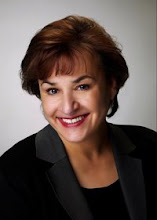The powerful doctor's note.
Some people think we will write anything on their behalf.
The second one is from a woman who wants a Doctor's Note to take to Weight Watchers. She doesn't want to lose weight. It's her husband, you see, she does his cooking and feels that she deserves to be a lifetime member of weight watchers. This one I don't understand at all. That's what cookbooks are for, and all the literature WW gives its members. I don't think they allow you to audit this course.
Of course there are the "too numerous to count" disability requests due to pregnancy. Women have had the audacity to ask for permanent disability at two months of pregnancy when they had a 9-5 desk job while I was "out to here pregnant" on my feet all day and most nights. The letters of medical necessity for an at home gym because we recommend exercise, the letters to extend sick leave when the patient has recovered "because I have another two weeks".
Then there are the drug fraud scams that patients will request you to approve. You prescribe a medication for two weeks for an acute illness. The patient requests you make it out for 90 days, because the copay is the same. Are they selling this stuff on the black market?
Not to mention the "get me out of jury duty" letters. The excuses for that one are legendary. "I am going to be on my period that week." " I have to go to the bathroom every two hours." " I had surgery" ( last week, last month, last year, ten years ago) you get the picture. I take medication.What does that mean? What happened to a jury of peers or civic duty?
Then there are the endless requests for controlled substances: sleeping pills, narcotics, tranquilizers that I have no diagnosis for and have never prescribed. The famous, I lost my prescription is popular especially at night, on the weekends and on Friday at 3pm.
Remember who selection committees pick for medical school. Doctors tend to be straight shooters who don't want to lose medical licensure due to fraud.
So when you are denied prescription requests, doctor's notes, or letters for court, remember we are liable for the veracity of our statements, and generally believe in accountability.
Until next time......
